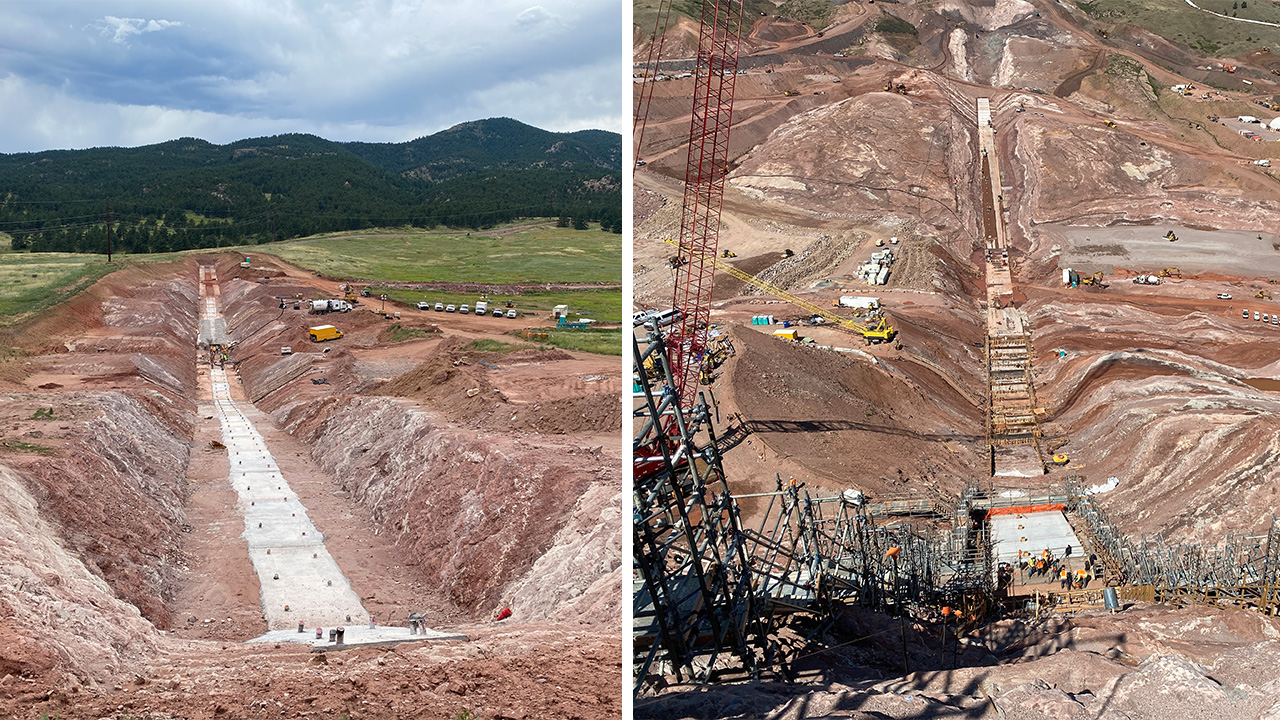Although the purpose of the plinth and the grout cap are identical, each is constructed slightly differently due to the individual characteristics of each dam site. The saddle dam’s grout cap is flush with the valley’s slope and embedded into the foundation against dental concrete (used to fill holes, grooves or areas of vertical surfaces) unlike the plinth at the main dam, which is slightly raised against the slope. Both dams have double-row grout curtains, which are thin, vertical rows of grout placed below the foundations. To ensure each is properly sealed, the main dam grout curtain is as deep as 230 feet below the foundation while the saddle dam grout curtain extends approximately 70 feet below. Additionally, the main dam has up to four additional rows of shallow grout holes, known as blanket grouting, to help seal off the near-surface rock and help resist consolidation in the foundation.
The grout cap is 8 feet wide, while the plinth varies between 25, 30 and 35 feet wide. Below the plinth, the valley’s slope varies in elevation, which results in fluctuating water pressures across the main dam. This requires the plinth to be wider in areas with greater pressures and force. On the south end of the reservoir, the valley does not drastically change in elevation below the grout cap. This allows the grout cap to maintain the same width and number of grouting rows since the pressure does not fluctuate.
The saddle dam grout cap was recently completed in August, while crews continue to push forward on the much larger construction of the main dam plinth.

